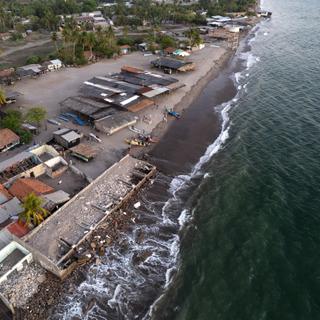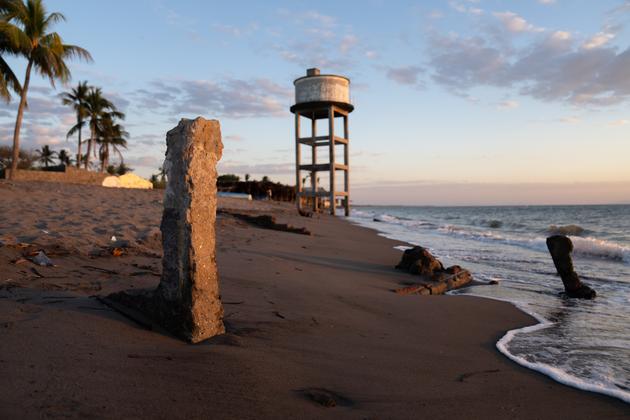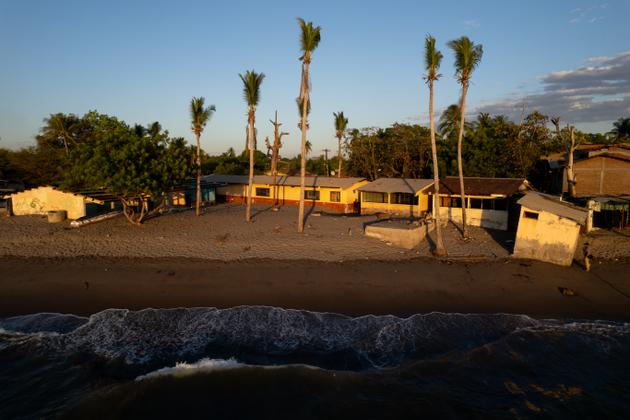


The Honduran town slowly submerged by rising waters
FeatureHonduras, the second poorest country in Latin America, is suffering the brunt of climate change. The coastal city of Cedeño is already partially submerged by the Pacific, while some rural areas suffer from devastating drought.
The man observed the gulf's calm waters. "You see," he said, pointing to the middle of the waves, "that's where I was born. When I'm on my boat, I sometimes lean over the water and say to myself, 'My home is there, beneath me.'" Manuel Jesus Hernandez, 54, is a fisherman from Cedeño – or from what's left of the small town on the Gulf of Fonseca, on the Pacific coast of Honduras, 100 kilometers south of Tegucigalpa, the capital. The house where Manuel was born now lies at the bottom of the ocean, as does a part of this village of 5,000 residents.
Honduras, a country with a poverty rate of 64%, the highest in Latin America after Haiti, is also one of the most vulnerable to the effects of climate change. In recent years, it has been particularly affected by storms, floods, and drought. It suffered the combined effects of the Covid-19 pandemic and hurricanes Eta and Iota in November 2020, leading to a major food crisis.
When you walk along the beach at Cedeño, scattered with rusty metal rods and concrete beams pointing aimlessly toward the sky, you have to imagine that there were once restaurants, hotels, nightclubs and stores. It was a small seaside resort that is now half-submerged. The main avenue of the town still appears on Google Maps and it's completely submerged. According to the town hall, five streets have been flooded. Wooden desks, eroded by sand and abandoned since 2019, remain in the school where Manuel went as a child. "The Pacific is our master, it makes us pay its tolls. It's all so sad," he said, standing at the foot of a large cement tank on stilts, itself ready to collapse in turn.


According to a study by the Committee for the Defense and Development of the Flora and Fauna of the Gulf of Fonseca (CODDEFFAGOLF), the sea has advanced 105 meters since 2005. "If nothing changes, Cedeño is likely to disappear by the end of the century," said Jorge Reyes of the Committee.
'Everything I earned is underwater'
Ondina Calderon, 75, was the owner of the San Simon Hotel, a two-story building with 17 rooms and a dance floor, as well as several restaurants. "When I was young, I moved to the United States, saved up and came back to invest here. Then the sea took it all away," she said, bedridden since suffering a stroke in 2021. "Everything I earned in the US is underwater." High tides have always flooded Cedeño, but since the devastating Hurricane Mitch in 1998, the water no longer recedes. Year after year, it eats away at the beach, burying buildings under the sand.
You have 75.56% of this article left to read. The rest is for subscribers only.
